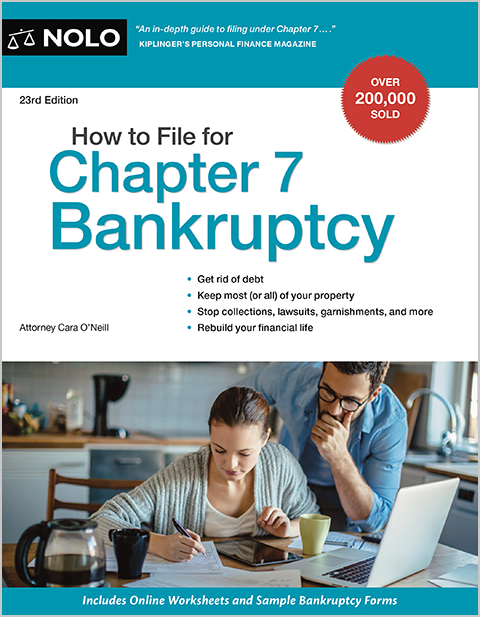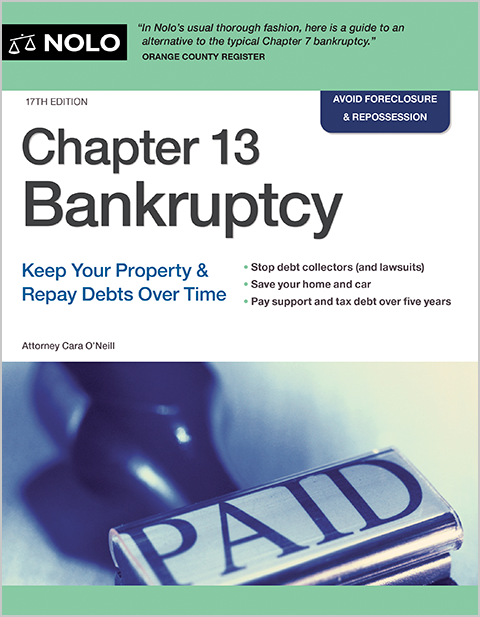"Lien Stripping" is a process available in Chapter 13 bankruptcy that can remove junior liens (second or third mortgages) and make the debt "unsecured."
Lien stripping in Chapter 13 bankruptcy is a process that allows you to eliminate a junior lien (such as second or third mortgage) from your real estate. You can strip a junior mortgage (and the associated lien) if the house is worth less than the balance of the senior mortgage. This procedure is unique to Chapter 13 bankruptcy—it isn't available in a Chapter 7 case.
(To learn more about what happens to your mortgage in Chapter 13 bankruptcy, including ways to avoid foreclosure, see Your Home and Mortgage in Chapter 13 Bankruptcy.)
Putting Up Collateral Creates a Property Lien
When you buy a house, you put up the home as collateral to secure the loan. If you don't pay the mortgage as agreed, the lender can foreclose on the home, sell it at auction, and apply the funds to your mortgage debt.
Putting up collateral gives the lender an ownership right in your property until you repay the debt. The ownership right is called a lien. In most cases, even if you wipe out your responsibility to pay the debt in bankruptcy, the lien creates a "secured debt" and will remain. The lien allows the lender to take back the property.
For example, most credit card debts are unsecured debts. You didn't agree to give the lender an ownership interest in the school supplies you bought for your kids on credit. If you wipe out that debt in bankruptcy, you'll get to keep the school supplies.
By contrast, most car lenders and home lenders get a lien on the property, making the debt a secured debt. In cases of secured debt, you have to give the property back, even if you wipe out the debt in bankruptcy.
Be careful, though. A few credit cards tend to be secured. For instance, most furniture, appliance, jewelry, and electronics credit accounts require you to secure the debt with the purchased property.
(Learn more in Types of Creditor Claims in Bankruptcy: Secured, Unsecured & Priority.)
Liens You Can Eliminate in Chapter 13 Bankruptcy
Lien stripping allows you to get rid of the "wholly unsecured" liens on your property. When a mortgage or lien is put on your house, its priority is usually determined by when the lien was recorded with your county (known as the "first in time" rule).
For the most part, the earlier recorded lien has priority over any subsequent liens. So if your house gets foreclosed on, your first mortgage lender will be paid first from the sale proceeds before the lender on your second mortgage sees any money.
In many cases, if you owed more on your first mortgage than the fair market value of your house, your second mortgage lender would not receive anything from the foreclosure because there would be nothing left over after paying the first. If the lender won't get any money at a sale, your second mortgage is considered "wholly unsecured" and can be stripped through a Chapter 13 bankruptcy.
Example. Say you own a house worth $300,000, and you have a $400,000 first mortgage. In this situation, you can strip any liens that are junior to your first mortgage. So if you had a second mortgage with a balance of $100,000, you could get rid of it through lien stripping in a Chapter 13 bankruptcy.
(For more details about lien stripping and how it works, see Getting Rid of Second Mortgages in Chapter 13 Bankruptcy.)
What Will Happen to Stripped Liens
The stripped liens will receive the same treatment as your other unsecured debts (such as credit cards) in your bankruptcy. These debts usually receive nothing or a small amount and get discharged (wiped out) at the completion of your Chapter 13 bankruptcy.
You won't be required to pay more if you strip a lien because the unsecured creditors must share a particular pool of money—usually your disposable income. For more specific information, you'll want to read about the Chapter 13 repayment plan.
After discharge, the lender whose lien was stripped will be required to remove its lien from your house.
(Learn why lien stripping isn't available in Chapter 7 bankruptcy.)

